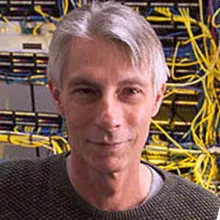Comparing One- and Two-way Quantum Repeater Architectures
Prateek Mantri, Kenneth Goodenough, Don Towsley
Quantum repeaters are an essential building block for realizing long-distance quantum communications. However, due to the fragile nature of quantum information, these repeaters suffer from loss and operational errors. Prior works have classified repeaters into three broad categories based on their use of probabilistic or near-deterministic methods to mitigate these errors. Besides differences in classical communication times, these approaches also vary in technological complexity, with near-deterministic methods requiring more advanced technology. Recent increases in the number of available memories, and introduction of entanglement generation through multiplexing motivate a re-comparison of one-way and two-way repeater architectures. In this work, we propose a novel protocol that optimizes multiplexed elementary link generation and distillation in memory-unconstrained 'connection-oriented' two-way repeaters to boost the entanglement generation rates. We introduce a recursive formulation to derive the probability distribution of the number of Bell pairs in multiplexed two-way repeater architectures, compatible with probabilistic n-to-k distillation protocols. We then compare the performance of this new protocol with one-way schemes in the parameter regime where one-way schemes have previously been shown to be advantageous, and find that the multiplexed two-way protocol provides better performance with lower resource and technology requirements.
CQN Authors

Prateek Mantri
SLC Vice Chair
University of Massachusetts - Amherst

Don Towsley
Distinguished Professor
University of Massachusetts – Amherst, Manning College of Information & Computer Sciences
